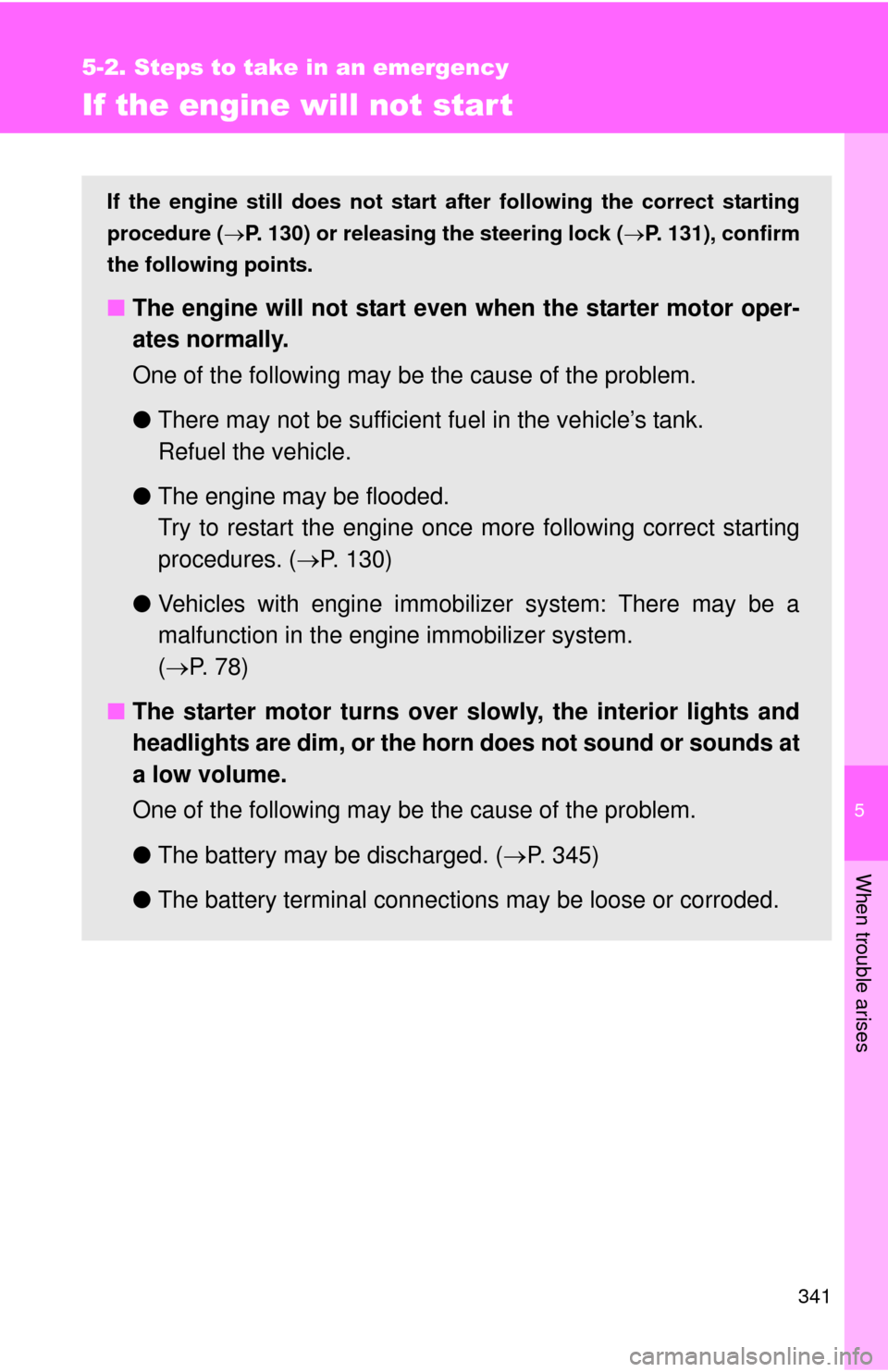Page 284 of 416
284
4-3. Do-it-yourself maintenance
Key batter y
Replace the battery with a new one if it is discharged.
■You will need the following items:
●Flathead screwdriver (To prevent damage to the key, cover
the tip of the screwdriver with plastic tape.)
● Lithium battery CR2016
■ Replacing the battery
Remove the cover.
Remove the module.
Remove the battery cover and
the depleted battery.
Insert a new battery with the
“+” terminal facing up.
Page 285 of 416
285
4-3. Do-it-yourself maintenance
4
Maintenance and care
■
If the key battery is discharged
The following symptoms may occur.
●The wireless remote control will not function properly.
● The operational range is reduced.
■ Use a CR2016 lithium battery
●Batteries can be purchased at your Toyota dealer, jewelers, or camera
stores.
● Replace only with the same or equivalent type recommended by your
Toyota dealer.
● Dispose of used batteries according to the local laws.
CAUTION
■Removed battery and other parts
Keep away from children. These parts are small and if swallowed by a child,
they can cause choking. Failure to do so could result in death or serious
injury.
NOTICE
■For normal operation after replacing the battery
Observe the following precautions to prevent accidents.
●Always work with dry hands.
Moisture may cause the battery to rust.
● Do not touch or move any other components inside the remote control.
● Do not bend either of the battery terminals.
Page 307 of 416
When trouble arises5
307
5-1. Essential informationEmergency flashers ......... 308
If your vehicle needs to be towed ........................ 309
If you think something is wrong ............................. 315
Fuel pump shut off system ........................... 316
Event data recorder ......... 317 5-2. Steps to take in an
emergency
If a warning light turns on or a warning buzzer
sounds... ........................ 319
If you have a flat tire......... 329
If the engine will not start ................................ 341
If the shift lever cannot be shifted from P (vehicles
with an automatic
transmission) ................. 343
If you lose your keys ........ 344
If the vehicle battery is discharged ..................... 345
If your vehicle overheats ....................... 349
If the vehicle becomes stuck .............................. 352
If your vehicle has to be stopped in an
emergency ..................... 354
Page 308 of 416
308
5-1. Essential information
Emergency flashers
NOTICE
■To prevent battery discharge
Do not leave the emergency flashers on longer than necessary when the
engine is not running.
Use the emergency flashers if th e vehicle malfunctions or is
involved in an accident.
Press the switch to flash all
the turn signal lights. To turn
them off, press the switch
once again.
Page 341 of 416

5
When trouble arises
341
5-2. Steps to take in an emergency
If the engine will not star t
If the engine still does not start after following the correct starting
procedure ( P. 130) or releasing the steering lock (P. 131), confirm
the following points.
■ The engine will not start even when the starter motor oper-
ates normally.
One of the following may be the cause of the problem.
●There may not be sufficient fuel in the vehicle’s tank.
Refuel the vehicle.
● The engine may be flooded.
Try to restart the engine once more following correct starting
procedures. ( P. 130)
● Vehicles with engine immobilizer system: There may be a
malfunction in the engine immobilizer system.
( P. 7 8 )
■ The starter motor turns over slowly, the interior lights and
headlights are dim, or the horn does not sound or sounds at
a low volume.
One of the following may be the cause of the problem.
●The battery may be discharged. ( P. 345)
● The battery terminal connec tions may be loose or corroded.
Page 342 of 416
342 5-2. Steps to take in an emergency
■The starter motor does not turn over, the interior lights and
headlights do not turn on, or the horn does not sound.
One of the following may be the cause of the problem.
● One or both of the battery terminals may be disconnected.
● The battery may be discharged. ( P. 345)
Contact your Toyota dealer if the problem cannot be repaired, or if
repair procedures are unknown.
Page 345 of 416
5
When trouble arises
345
5-2. Steps to take in an emergency
If the vehicle batter y is discharged
The following procedures may be used to start the engine if the
vehicle's battery is discharged.
You can call your Toyota dealer or qualified repair shop.
If you have a set of jumper (or boo ster) cables and a second vehi-
cle with a 12-volt battery, you can jump start your Toyota following
the steps below.
Push the tab in and lift the
cover off.
Page 346 of 416
346 5-2. Steps to take in an emergency
Connecting the jumper cablesPositive (+) battery terminal on your vehicle
Positive (+) battery terminal on the second vehicle
Negative (-) battery terminal on the second vehicle
Connect the jumper cable to ground on your vehicle as shown in
the illustration. Start the engine of the second vehicle. Increase the engine
speed slightly and maintain at that level for approximately 5
minutes to recharge the battery of your vehicle.
Maintain the engine speed of the second vehicle and start
the vehicle's engine.
Once the vehicle’s engine has started, remove the jumper
cables in the exact reverse order in which they were con-
nected.